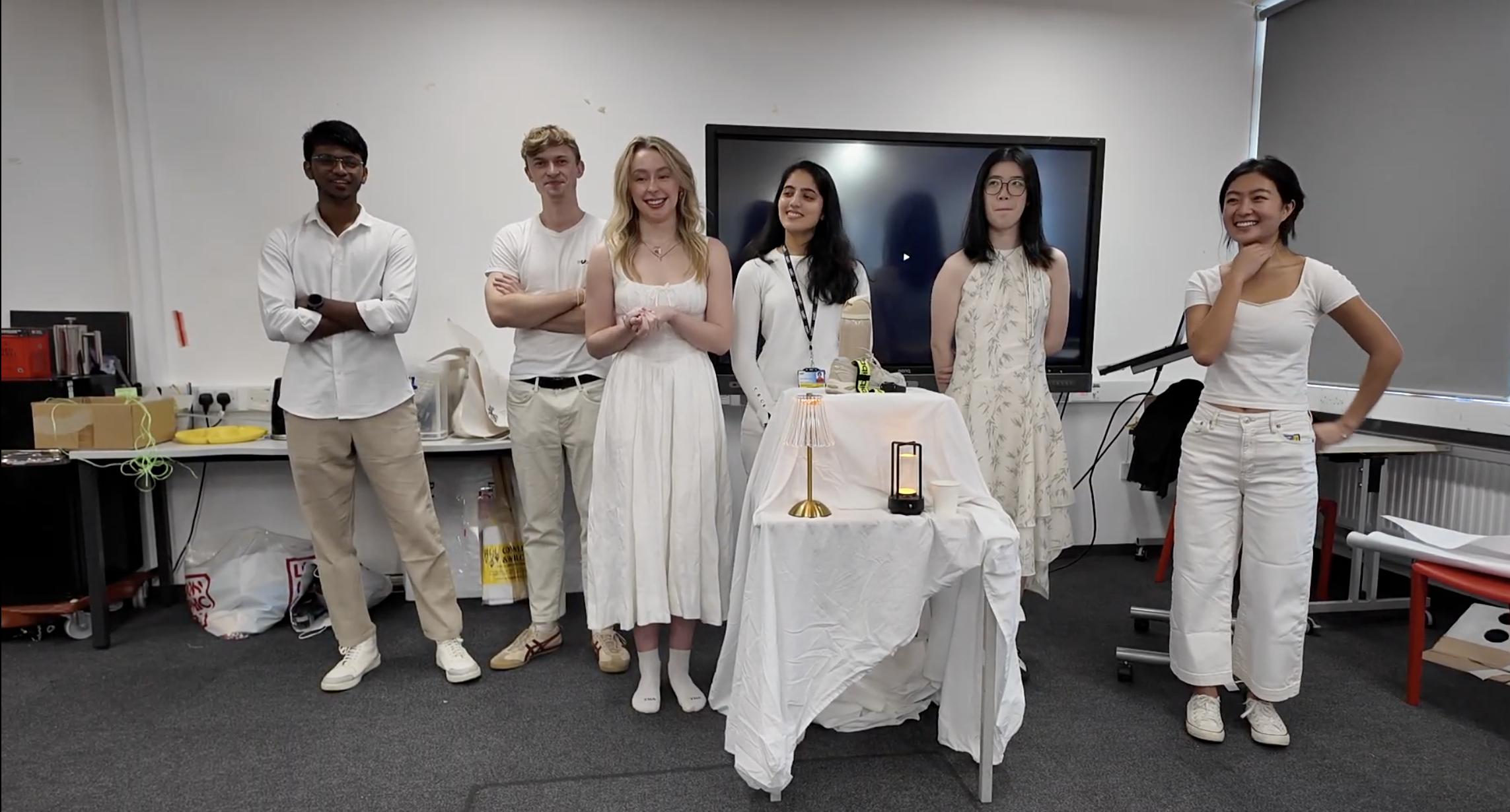Week Four: Social Critique of Strava Culture
As we entered the second and final week of this project, we reached a turning point. Our idea began as a comedic video with deeper, darker underlying themes that highlighted the unhealthy aspects of Strava. We quickly transitioned into creating a more interactive “cult initiation” experience. This social critique showcased the obsessive behaviours we discovered through our research, how people become so attached that they feel compelled to keep engaging, even when it goes against their better judgment. There’s a constant pull to continue, a cycle of validation and repetition that mirrors real patterns within fitness and tracking culture.
We spent the week creating our oath video to play during the experience and then practicing and setting up the atmospheres. We designed a dark, ritual-like environment, keeping our tone upbeat and enthusiastic to show how Strava presents positivity while masking deeper pressures that many people feel when using Strava. The main message is how easily motivation can become an obsession.
Throughout the week, we discussed different ways of involving the audience. We wanted the volunteers not just to watch but to feel part of the cult, blurring the line between user and follower. This led us to include moments of repetition, chanting, and physical movement, which made the experience more immersive but also uncomfortable. The balance between humour and unease was something we talked about throughout this week because it was important that people could laugh, but also recognise the truth behind it.
One of the most interesting parts for us as a group was the participant feedback. They said they felt pressured to keep going, even when they wanted to stop. They had an uncomfortable feeling, especially after taking the “oath,” when it shifted from playful to genuinely uncomfortable. Some commented that they felt like they “had” to keep going because everyone else was, and the leaders would try and talk them into staying, mirroring exactly the kind of social pressure and performative validation we aimed to critique. Hearing those reactions made the project feel complete, as it showed our concept successfully translated into a real uneasy response.
If I were to do it all again, some feedback we got about pushing the “ceremonial water” moment further. We missed the opportunity to make it slightly unpleasant (like adding salt) to make the initiation even more uncomfortable. That little thing could have enhanced the feeling of pressure and blind participation we wanted to showcase. Going forward, I’d like to research more about how Strava and similar platforms create obsession, and how design can expose or challenge those patterns of behaviour.

